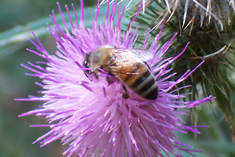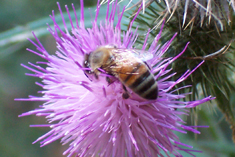
Honey bees pollinate approximately $15 Billion worth of crops in the U.S. each year
It is estimated that honeybees only pollinate 15% of the most common food crops worldwide
Over 75% of all flowering plants are pollinated by animals
More than 100,000 different animal species – and perhaps as many as 200,000 – play roles in pollinating the 250,000 kinds of flowering plants on this planet
Insects (bees, wasps, moths, butterflies, flies, beetles) are the most common pollinators, but as many as 1,500 species of vertebrates such as birds and mammals serve as pollinators, including hummingbirds, perching birds, flying foxes, fruit bats, possums, lemurs and even a lizard (gecko)
At least 3 bat, 5 birds, and 24 butterfly, skipper and moth, one beetle and one fly species in the United States that are federally listed as endangered under the Endangered Species Act of 1973, as amended, are pollinators. It is unknown how many of the listed plants require pollinators.
Of the hundred or so crops that make up most of the world’s food supply, only 15% are pollinated by domestic bees, while at least 80% are pollinated by wild bees and other wildlife
The number of commercially managed honeybee colonies has declined from 5.9 million in the 1940s to 4.3 million in 1985 and 2.7 million in 1995
Data: USFWS

